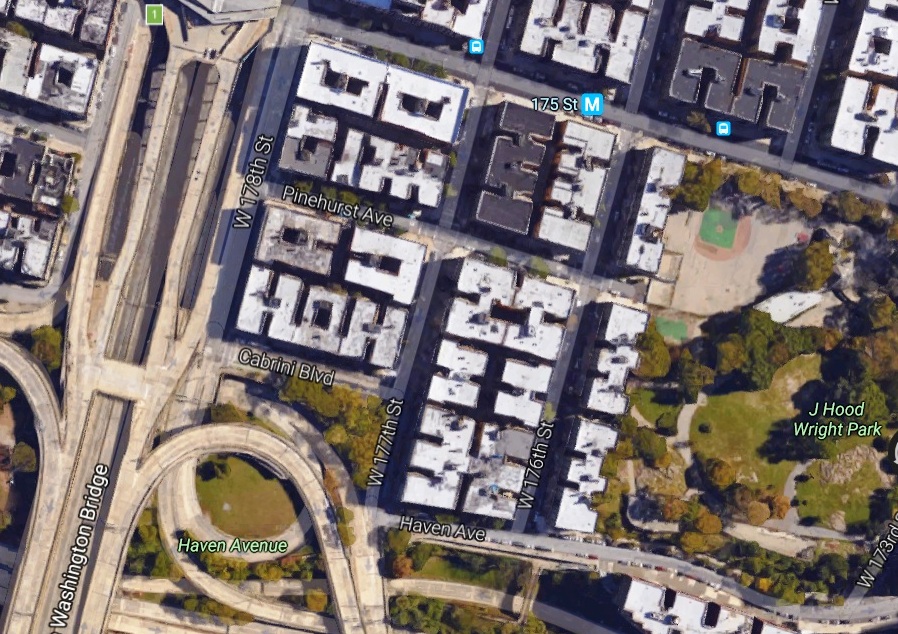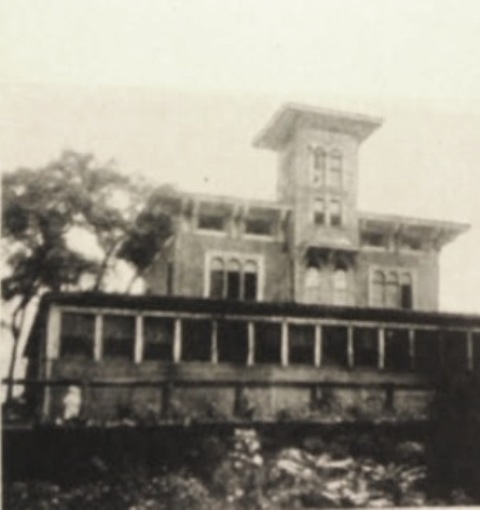
In June 1912, New York City Police Commissioner Rhinelander Waldo created a new 42nd Police Precinct in Washington Heights to serve the people of the rapidly developing northern tip of Manhattan along the shores of the Hudson and Harlem rivers.
As I mentioned in Part I of this Old New York police story, the new precinct was bounded by 165th Street, the Harlem River, Dyckman Street, and the Hudson River. It also included the Harlem River Speedway, which was located between 155th and 165th streets.
Although the city leased a new, two-story brick loft building at 1389 St. Nicholas Avenue to serve as a temporary police station for the precinct, the hot and stuffy building was not suitable for sleeping in summer months for the men on call.
Thus, in July 1913, the 196 foot patrolmen and 25 mounted patrolmen of the new 42nd Precinct moved into a rambling, 3-story frame home reportedly built in the 1860s by William Howe Guion (of the Guion line of European steamers), and, later, occupied by Robert C. Rathbone (a successful insurance broker who served with the New York Militia during the Civil War).
The home and wooded property, bounded by Haven Avenue, Fort Washington Avenue, West 176th Street, and West 177th Street in Washington Heights, had commanding views of Riverside Drive and the Hudson River.
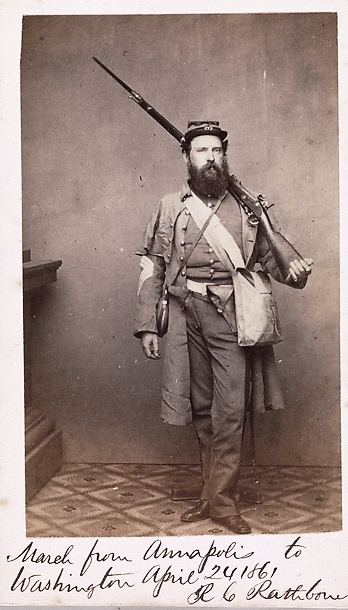
For the next 10 years, the men of the 42nd Precinct lived in rural luxury in what became known as the best station house in New York City.
During their time off, the men enjoyed swimming, boating, gazing at the neighbor’s cows, gardening, and playing handball and lawn tennis. Some of the men, like Sergeant John McCullum, were members of the Metropolitan Boat Club. These men practiced their skills by rowing canoes from Washington Heights to the Jersey shore.
(The New York Sun once reported that the men of the 42nd Precinct had “greatly reduced their girth” after living at their new location in Washington Heights for about a year.)
They also enjoyed the company of Sir Tom, the station cat (aka rat catcher), and Lady Alice, one of the many hens that lived on the grounds and who adored spending time with her policemen friends.
And, if they were lucky, they may have even had a chance to meet Diamond Jim Brady, W.C. Fields, or any of the many other famous people who were the good friends of their neighbor next door, Ben Riley, the popular proprietor of the Arrowhead Inn.
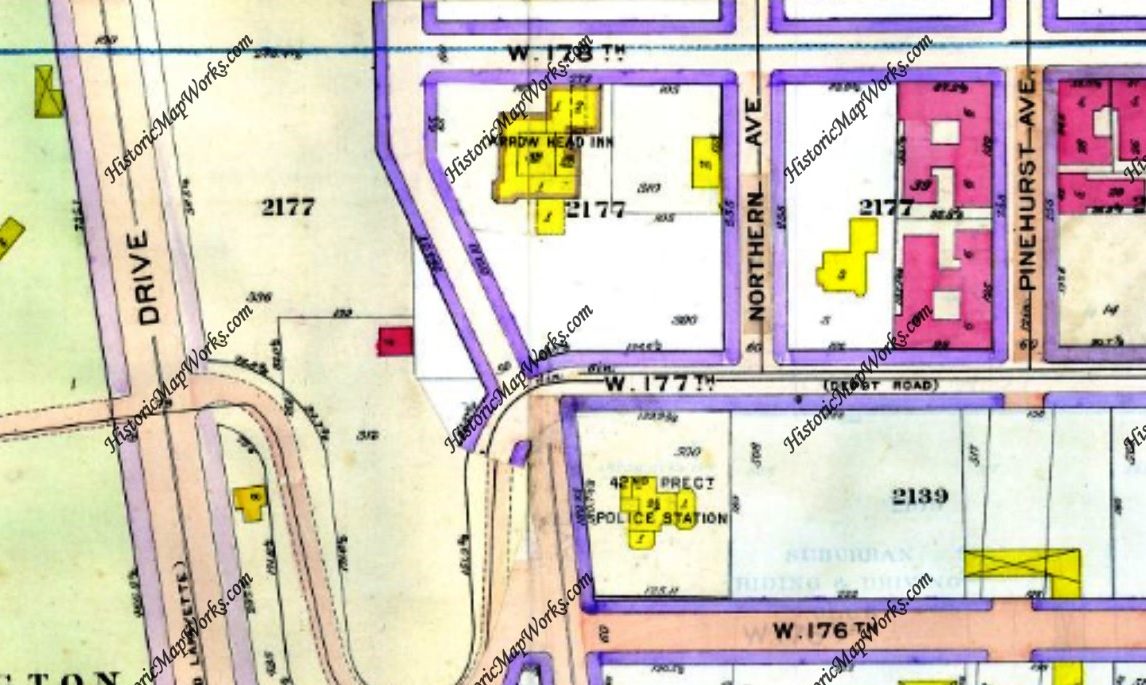
For the men of the 42nd Precinct, landing a beautiful old mansion overlooking Riverside Drive on the banks of the Hudson River was a matter of being in the right place at the right time. I guess you could say they had both Ben Riley and Benjamin Altman to think for their good fortune.
The Hendrick Oblienis Farm
In the late 1600s, the hilly region of Washington Heights was known as the common lands of Jochem Pieter’s Hills (the land to the east, between present-day Broadway and the Harlem River, was called Jochem Pieter’s Flats.)
Captain Jochem Pietersen Kuyter, a sea captain under the King of Denmark, came to America in 1639 with his friend Jonas Bronck and other pioneers. He obtained a grant of 400 acres from Director General Kieft and built a thatched-roof house somewhere in the vicinity of 125th Street. He and his wife were killed by Native Americans in March 1654, in retaliation for a massacre at Corlear’s Hook in 1643, in which 40 Natives were killed.
In 1691, one of the men who was allotted a portion of Jochem Pieter’s Hills was Joost van Oblienis, one of the earliest settlers in Niew Haerlem. The Oblienis farm extended from about 170th to 185th Street, from the Old Post Road (Broadway) to the Hudson River. Their homestead was in the area of today’s West 176th Street, between Fort Washington Avenue and Broadway.
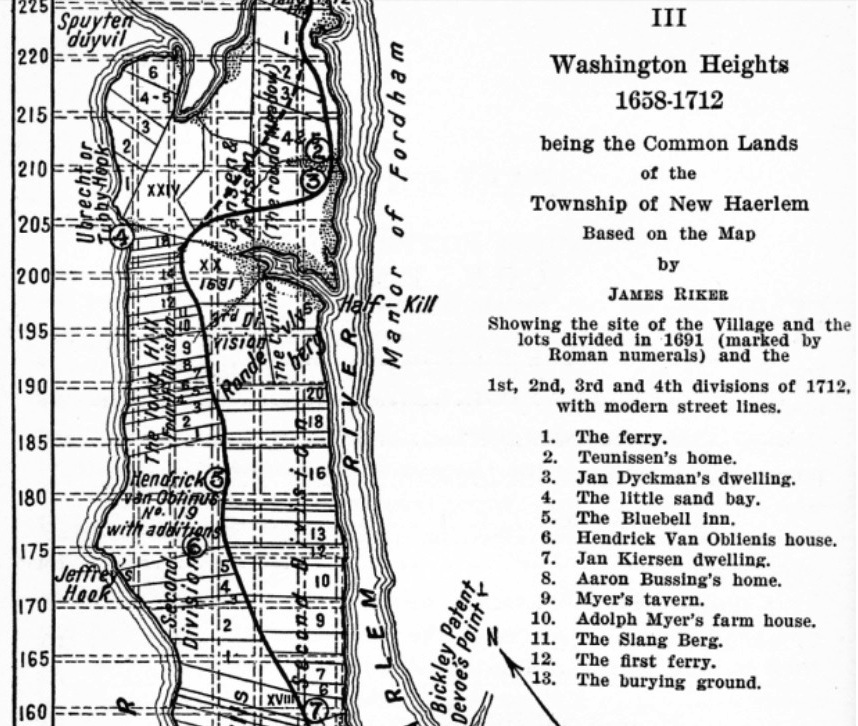
When Joost van Oblienis passed away in 1706, his son Hendrick came into possession of the farm. Thirty years later, his son Johannes, the Constable of New Haerlem in 1736, took over the farm. In 1769, Hendrick sold the upper tract to Blazius Moore, a tobacco farmer; the lower part went to his son, also named Hendrick.
This lower tract, bounded by present-day West 173rd and West 178th streets, passed to Jacob Arden, a butcher, during the Revolution. I’m not sure who owned the land between Arden’s death in 1798 (he died in what was then the Hamlet of Kakeat in Rockland County — today this area is the called Montebello in the Town of Ramapo), but I do know that by the 1860s, a portion of the property was owned by William Howe Guion, who constructed the house that would become home to the 42nd Precinct in 1913.

Ben Riley’s New Arrowhead Inn
Fast forward to sometime around 1908, which is when Benjamin Altman of department store fame (B. Altman and Company) leased the old Guion property and house to Benjamin Crawford Riley, the proprietor of the Arrowhead Inn, a popular roadhouse for high-society horsemen.
When his lease expired in September 1913, Ben Riley purchased the large W.H. Summervile (or Somerville) home and two-acre plot one block north on Haven Avenue for about $160,000 (this property was previously owned by John Milton Hopkins and his wife Augusta Haven Hopkins). Ben added a bungalow-style hotel to the site, and he remodeled the existing house to feature a restaurant that could seat about 1,000 people.
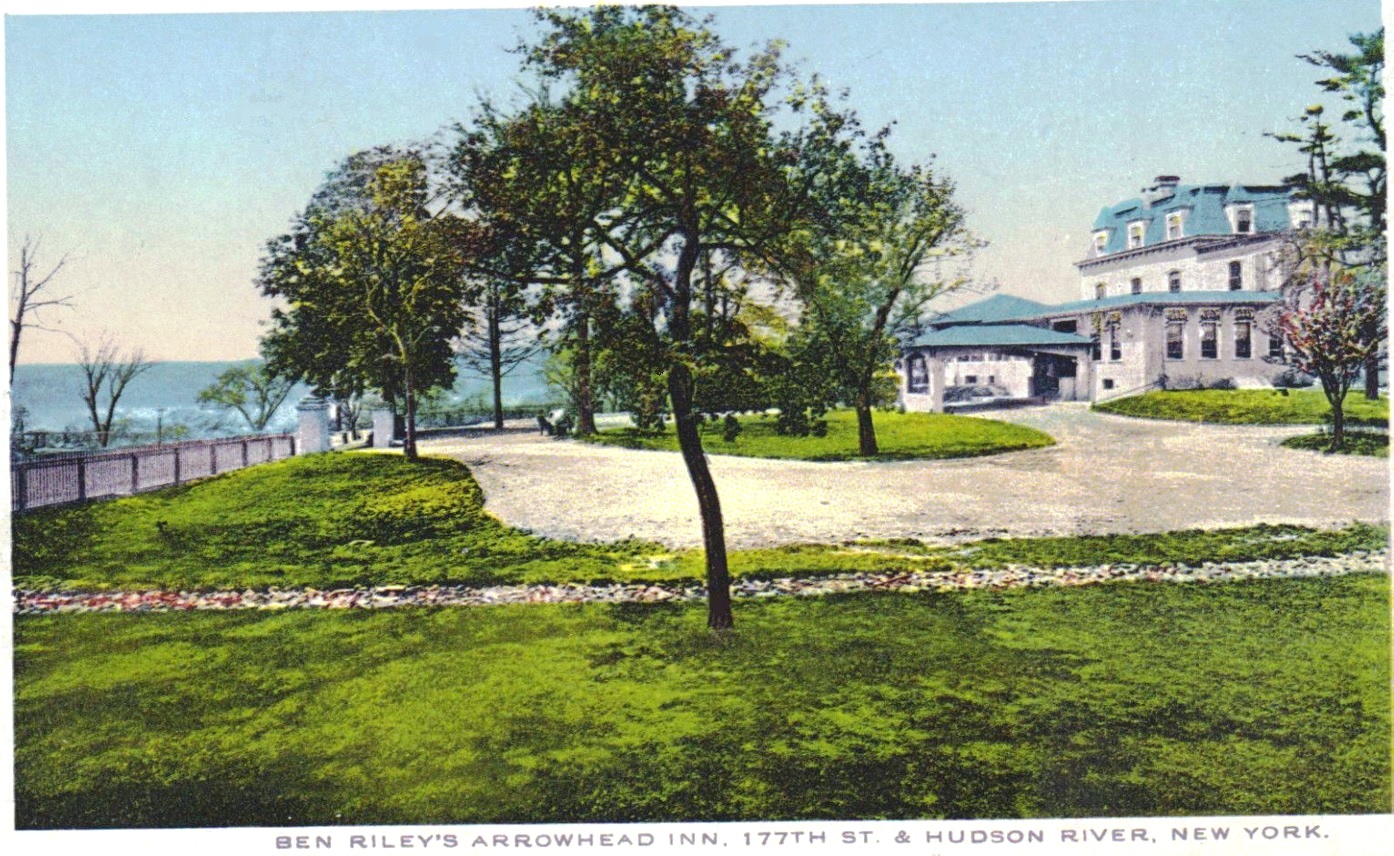
Although B. Altman had originally intended to improve his real estate holdings and sell the land to developers, for some reason he changed his plans. Instead, he leased “the old Arrowhead Inn” to New York City for use as temporary headquarters for the 42nd Police Precinct.
The Policemen Save Each Other and Their Hens
Fast forward again three years to the morning of January 15, 1916.
At about 10 a.m., Ben Riley noticed flames coming from the second story of the police station. He ran to house and called out to Lieutenant Sauder, and then he sounded the fire alarm.
The 20 men who had been gathered in the assembly room went into action. They first woke up the still-sleeping policemen in the smoke-filled dormitory on the second floor, and then they headed up to the top floor to awaken Captain Abram C. Hulse. A few other men released all the hens from their run, which adjoined the building. (Hopefully someone also saved Sir Tom, the station cat.)

While the policemen waited for the firemen to arrive, they set up a bucket brigade. In short time, the seat of the fire on the second floor was extinguished and the building was saved. (A faulty chimney flue was determined to be the cause.) The men spent the next hour or so rounding up Lady Alice and her sister hens.
The old house continued to serve as a “temporary” police station for the next seven years. But by 1923, when many of the country mansions along Fort Washington Avenue were being replaced by large apartment houses to meet the city’s housing shortage, it was time for Ben Riley and the men of the 42nd Precinct to leave their rural home in Washington Heights.
The 42nd Precinct Moves

In October 1923, Ben Riley sold his block of land bordered by 177th, 178th, Haven Avenue, and Northern Avenue (now Cabrini Blvd.), and opened a new Arrowhead Inn in Riverdale, Bronx, at 246th Street and Henry Hudson Parkway. Less than a year later, in January 1924, three six-story brick apartment buildings designed by Gronenberg Leuchtag, architects, appeared on the site of the beautiful old inn.
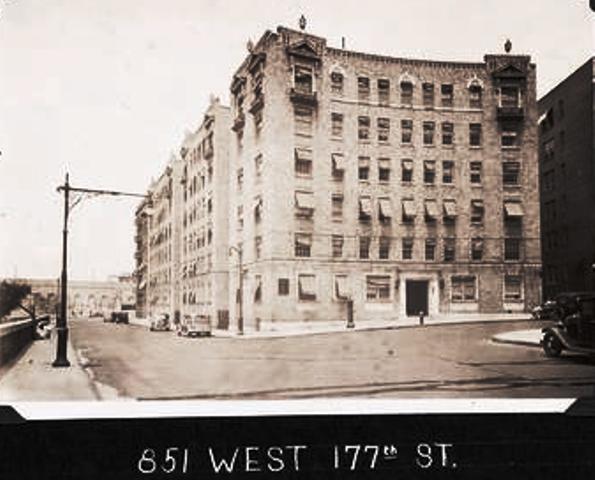
In August 1923, under the watch of Acting Captain Alphonse S. Rheaume, the 42nd Precinct moved into the headquarters of the 40th Precinct (later called the 32nd Precinct) at 152nd Street and Amsterdam Avenue. Plans called for the construction of a new station house at 182nd Street and Wadsworth Avenue, but until that was completed, all of Manhattan north of 152nd Street was covered by the station at 152nd Street.
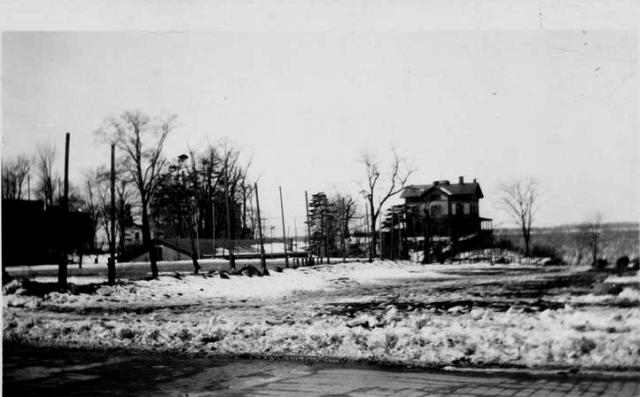
Sometime around 1922 — just before the move to 182nd Street — the 42nd Precinct of Washington Heights was renamed the 17th Precinct. Today, it is known as the 34th Precinct, and the station is located at 4295 Broadway at West 183rd Street. The men and women of the precinct no longer have a view of the Hudson River, and I seriously doubt they have any hens (maybe they have a cat), but I wouldn’t be surprised if many of them still enjoy swimming and boating when they’re off duty.

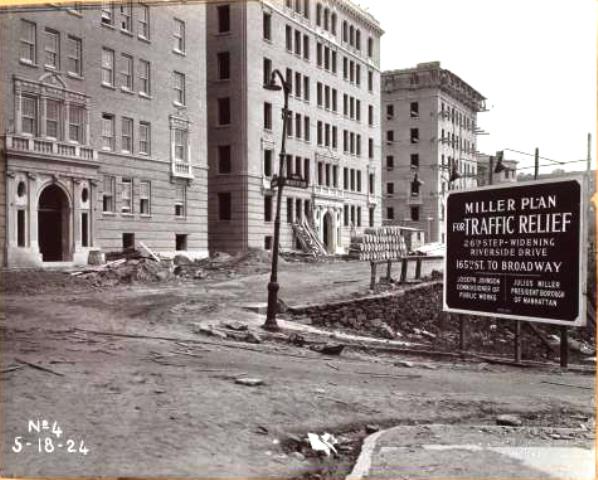
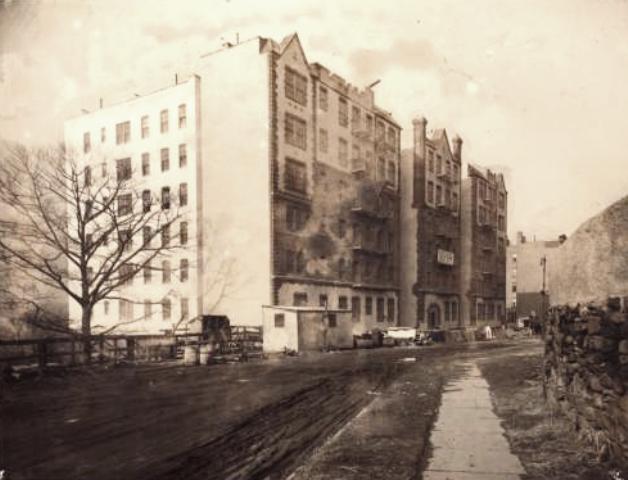
The End of the Arrowhead Inn
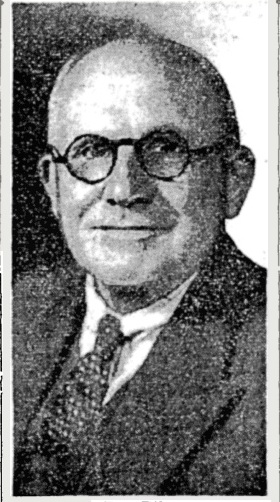
Sometime in the 1950s, the apartments that replaced Ben Riley’s Arrowhead Inn on the northeast corner of Haven Avenue and West 177th Street were demolished to make way for a new approach to the George Washington Bridge, which opened on October 25, 1931.
By this time, Ben’s new Arrowhead Inn was doing very well up in the Riverdale section of the Bronx, at the intersection of West 246th Street and the Henry Hudson Parkway.
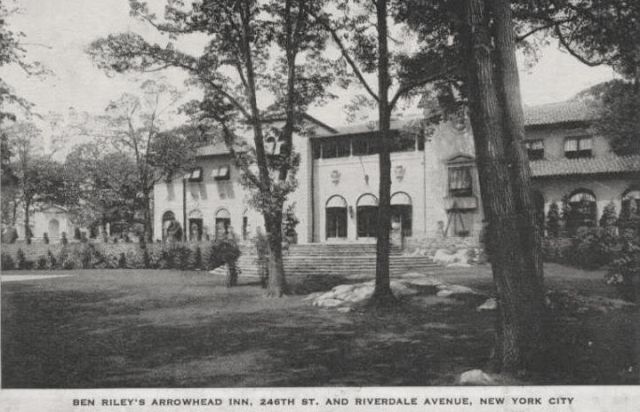
In 1940, Ben moved his inn one final time to Yonkers, at 385 Tuckahoe Road. Four years later, on February 18, 1944, The New York Times reported that the 73-year-old inn keeper had died during an early-morning fire in the two-story brick inn.
Apparently, he had made it as far as the second-floor hallway when he was overcome by smoke. His wife, Rose Wallace Riley, her brother and wife, Jack and Mary Wallace, and a headwaiter who worked at the inn were rescued by the firefighters (Rose escaped the second floor via a ladder).


